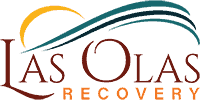
The Fentanyl Crisis in Southern California
Many states have been struggling with the fentanyl epidemic, and Southern California has been no exception. In fact, it’s a hotbed of pill smuggling because of the border shared with Mexico. Because of a flood of fentanyl into American borders, the opioid epidemic has become even deadlier than in the past. In fact, in 2020, Californians and America were battling twin pandemics. Over 100,000 people died from an opioid overdose between 2020 and 2021, according to the CDC. And in California, overdose deaths surged 48% that same year. California has more deadly overdoses from opioids than most of the country, ranking 5th in the country from 2020 to 2021. Almost all of those overdoses involved fentanyl or its analogs.
Many of the people dying from fentanyl overdoses never knew they were using the drugs. In fact, accidental overdose is the top cause of death for people aged 18-45, a startling new number from the CDC. Fentanyl addiction is also at an all-time high.
Why Are People Overdosing on Fentanyl In Southern California?
So, where are all fentanyl overdoses in Southern California coming from? For many people, ingesting fentanyl is not their actual goal. Many fentanyl overdoses are accidental because the users are “opioid naïve”, meaning they’re not heavy users and may not use opioids at all. Their bodies are not used to heavy drugs and their breathing is suppressed, leading them to death or severe brain damage if they are not resuscitated quickly.
Accidental fentanyl overdose has become common, as drug dealers find ways to remain more anonymous and cash-flush than ever. They reach their target audience via WhatsApp, Twitter, Facebook, and Signal. Younger users who are experimenting with drug use often buy from strangers online using these apps, causing the drug dealers to avoid accountability mostly.
In almost every state in America, people are overdosing on fentanyl-tainted drugs. In California, fentanyl has been found in meth, cocaine, and opioids purported to be Molly or other opioids, leaving families and friends mourning their loved ones after an overdose.
Many overdoses can be reversed using Naloxone. However, fentanyl and its analog, carfentanyl, are heavy sedatives that sometimes require multiple doses of Naloxone, the overdose-reversal drug that can be a lifesaving harm-reduction tool.
An influx of Fentanyl to Southern California from the Border
California is an easy target for opioid traffickers who can easily travel over the border and up and down the coast. Cartel dealers hire mules to drive drugs throughout America, often also bringing violence and death in their wake. These drugs make it to smaller-time dealers, who almost always distribute them directly on the street or via social apps.
In Southern California, cartel drugs are a huge problem that law enforcement encounters regularly. From April 2021 to October 2022, the DEA seized over a thousand pounds of fentanyl powder alone. This powder makes its way into the hands of young drug users often. Fentanyl is often pressed into counterfeit pills such as Percocet or Oxycontin. It’s also regularly added to drugs like heroin, cocaine, Molly, and other street drugs
There is no safe dose of fentanyl. Just using the drug one time could cause an overdose, especially because so much of it comes from over the border. Non-pharmaceutical fentanyl can be stronger and more dangerous than hospital quality. There are no checks and quality control for street drugs and buying from sources that disappear quickly means more danger of getting a “bad batch”.
Getting Help for Fentanyl and Other Drug Use
If you or somebody you love is struggling with opioids, there is help available. Opioids are physically addictive drugs that change a person’s thinking and body over time. Opioid use disorder is a treatable condition. We want to help you pick up the pieces and reclaim your life. Las Olas offers a serene, private, safe community where you can begin your journey in recovery. Learn more about how we can help you get started by calling us at US: (949) 279-1376 or MX: (612) 153-5726.
